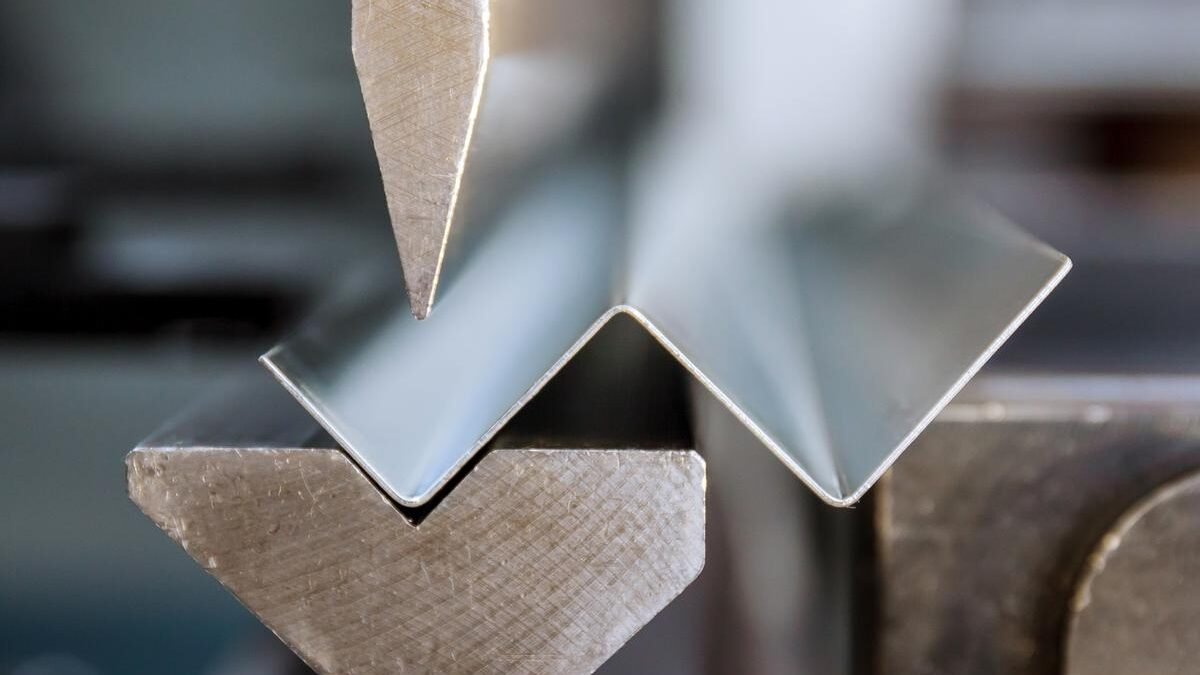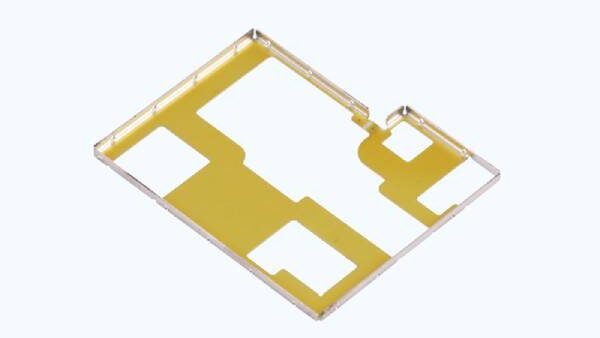Understanding the distinction between bending and blanking is crucial in the manufacturing and metalworking industries. Let’s delve into the nuances of these two processes.
Bending is a process where metal is deformed by applying force, changing its shape without altering its volume. Blanking, on the other hand, involves removing a part of the metal sheet to produce a hole or a shape.
To grasp the full implications and applications of these processes, let’s explore them in detail.

How Does Bending Work in Metalworking?
In the vast world of metalworking, bending stands out as a unique art. It’s not about cutting or joining but reshaping metal into desired forms. Let’s delve into the intricacies of this process.
The Mechanics of Bending
Bending, in the realm of metalworking, is a process where a piece of metal is deformed by applying an external force. Unlike cutting or welding, bending changes the shape of the metal without altering its volume or mass. The mechanics behind bending involve applying a force to a metal sheet or rod, causing it to bend at an angle and form a predetermined shape. This force, typically exerted by a machine or tool, exceeds the metal’s yield strength, making it deform. However, once the force is removed, the metal tends to return to its original shape due to its elasticity. To ensure the metal retains the bent shape, the force must surpass the metal’s elastic limit but stay below its fracture point.
Common Bending Techniques
There are several techniques employed in the bending process, each suited for specific applications:
- V-bending: This is the most common bending method. Here, the metal sheet is pressed between a V-shaped punch and die.
- U-bending: As the name suggests, this technique is used to form a U shape. The metal is placed between a two-sided die and then pressed from above.
- Edge bending: This involves bending the edge of a metal sheet to a certain angle. It’s often used for creating flanges.
- Coining: A high force is applied to the metal, making it flow and fill the die. This method is more about creating detailed shapes than simple bends.
Each technique has its advantages, limitations, and ideal use-cases, making the choice of method crucial based on the desired outcome.
Applications of Bending
Bending plays a pivotal role in various industries due to its ability to produce intricate shapes without the need for joining or welding. Some of its primary applications include:
- Construction: Beams, girders, and other structural elements are often bent to specific angles to provide stability and aesthetics to buildings and bridges.
- Automotive: Car bodies, chassis, and even exhaust pipes undergo bending processes to achieve their final shapes.
- Aerospace: Aircraft components, especially those within the wings and fuselage, are bent to precise angles to ensure aerodynamic efficiency.
- Furniture Manufacturing: Metal furniture, especially chairs and tables, often features bent components for both functionality and design.
The versatility of bending ensures its continued relevance across industries, making it a cornerstone of modern manufacturing.

Unraveling the Blanking Process
In the realm of metal fabrication, blanking stands out as a pivotal process. It’s not just about creating holes but crafting precise metal pieces from larger sheets. Let’s dive deeper into this fascinating technique.
The Basics of Blanking
Blanking is a metal fabricating process, wherein a metal workpiece is removed from the primary metal sheet or strip. The primary tool involved in this process is a combination of a punch and a die. When force is applied, the punch pushes the metal workpiece into the die, resulting in a hole in the primary sheet and producing a piece of the desired shape. The removed piece, often referred to as the “blank,” is then further processed or used as-is, depending on the application. It’s essential to understand that in blanking, the removed piece is the primary interest, unlike other processes where the hole itself is the desired outcome.
Advantages of Blanking
Blanking offers several advantages that make it a preferred choice in various applications:
- Efficiency: Blanking machines can produce a large number of blanks quickly, making it suitable for mass production.
- Precision: The punch and die mechanism ensures that each blank is of consistent shape and size, ensuring high-quality outputs.
- Cost-effective: Given its efficiency and precision, blanking can be more economical than other metal cutting processes, especially for large-scale operations.
- Smooth Edges: The blanks produced usually have smooth and clean edges, reducing the need for further finishing processes.
Industries Relying on Blanking
Given its benefits, several industries heavily rely on the blanking process:
- Automotive Industry: Blanking is used to produce various car parts, from body panels to smaller components like washers or gaskets.
- Electronics: Many electronic components, especially those in computers and mobile devices, are produced using the blanking process.
- Aerospace: Precision is paramount in aerospace, and blanking provides the necessary accuracy for producing specific components.
- Jewelry: Intricate designs, especially those in metal jewelry, often utilize blanking to achieve detailed shapes.
- Appliance Manufacturing: Many household appliances have metal parts that are produced through blanking, ensuring durability and precision.
The blanking process, with its efficiency and precision, remains a mainstay in modern manufacturing across various sectors.

Key Differences Between Bending and Blanking
Purpose and Outcome
At their core, bending and blanking serve distinct purposes in metalworking:
- Bending: This process is all about deformation. When metal undergoes bending, its shape changes, but its volume remains consistent. The primary objective is to achieve a specific angle or form without removing any material from the metal piece.
- Blanking: In contrast, blanking is a subtractive process. The primary goal is to remove a piece of metal from a larger sheet or strip, resulting in both a hole in the original material and a newly formed piece, known as the “blank.” The focus here is on the removed piece, not the leftover material.
Tools and Equipment
The machinery and tools used in bending and blanking differ significantly due to their distinct objectives:
- Bending: Bending machines, press brakes, and other specialized equipment are used to exert force on the metal, causing it to bend. The tools are designed to deform metal without cutting or breaking it.
- Blanking: The blanking process primarily relies on a punch and die mechanism. The punch pushes the metal into the die, cutting out the desired shape. Blanking machines are designed to ensure precision and consistency in the removed pieces.
Impact on Material Properties
Both bending and blanking can influence the properties of the metal:
- Bending: When metal is bent, it undergoes stress, especially at the bend region. This can lead to work hardening, where the metal becomes stronger and less ductile at the bend. However, if bent beyond its limits, the metal might crack or break.
- Blanking: The act of removing material can introduce stresses around the cut edges, leading to potential deformation or warping. The edges of the blanked piece are often smooth, but they might undergo further processes to ensure they meet specific standards.

Conclusion
Bending and blanking, though both integral to the world of metalworking, serve distinct purposes and have unique implications.
Bending is the art of deformation, reshaping metal without compromising its volume. It’s a testament to the malleability of metals, allowing industries to craft intricate designs, from the curves of a car’s body to the beams supporting a skyscraper. The process emphasizes the preservation of material, ensuring that every bit of metal serves a purpose.
On the other hand, blanking is about precision removal. It’s a subtractive process where specific portions of metal are cleanly cut out, leaving behind both a hole and a new piece, the “blank.” This method is crucial for creating consistent, high-quality pieces, be it for electronic components or jewelry designs.
The machinery and tools for each process differ significantly, with bending tools focusing on deformation and blanking tools on precise cutting. Moreover, each process has its own set of implications on the material properties, from work hardening in bending to potential edge stresses in blanking.
In the vast realm of manufacturing, both bending and blanking hold their ground as indispensable processes. They cater to different needs, yet both are pillars supporting the intricate designs and structures we see in our everyday lives. Whether it’s the sleek curve of a smartphone or the precise cut of a washer, these processes ensure that industries can bring visions to life with unparalleled precision and efficiency.



